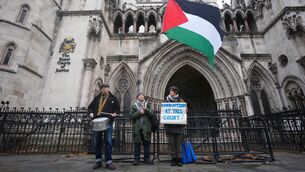CIÉ blames traffic congestion for loss of €52m
While passenger numbers increased sharply, CIÉ recorded losses of €3.6m in 2002.
However, the deficit would have been much higher but for property sales that raised almost €21 million for the group.
According to the annual report published yesterday, CIÉ incurred losses of €3.6 million for the year as compared to a deficit of €7.8m in 2001. The 2002 losses take into consideration surpluses from property sales, principally the sites at Tallaght which have yielded a net profit of €20.9 million.
The CIÉ companies have made what they describe as ‘significant progress’ in the past year, with strong growth in passenger numbers.
“This improvement is a result of the heavy investment under the Government’s National Development Plan as well as EU funding, which have revitalised the company’s bus and rail services,” a CIÉ spokesman said.
Over €375 million was spent in 2002, mainly on rail infrastructure including safety investment, as well as other rail and bus improvements. In Dublin, passenger numbers on Bus Átha Cliath’s peak services have increased by over 20% since 1997.
Rail commuter numbers in Dublin have also risen sharply, up from 20 million in 1997 to 24 million in 2002, an increase of 20% over that period.
Iarnród Éireann and Bus Éireann recorded deficits in 2002 of €22.5 million and €9.4 million respectively. Bus Atha Cliath was the only trading company of the group to record a surplus. It made €3.4 million last year.
CIÉ blames traffic congestion, particularly in Dublin, for much of its losses. Recent studies have shown that gridlock cost Bus Átha Cliath and Bus Éireann almost €52 million in 2002.
“When Dublin bus journey times are analysed and compared with those of 22 other comparable cities around Europe, the effects of the problem becomes clear,” said CIÉ yesterday. “The average peak time speed of buses in Dublin is 14.6 kph, 34% slower than in the other cities which average 19.6 kph.”
According to a spokesman, the congestion meant that 200 extra buses had to be used as a result to ensure that timetables were met.
During 2002 Iarnród Éireann announced its largest ever investment in carriages - €117 million in 67 new interCity carriages, which will enter service in the autumn of 2005. Iarnród Éireann ams to have replaced all carriages in the fleet over 30 years old by 2007 at the latest.














